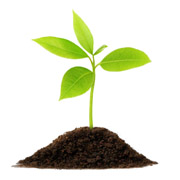Agronomy and Horticulture, Department of
Plant and Soil Sciences eLibrary
Gene Cloning Part 2: Making and Screening Gene Libraries
Document Type
Learning Object
Date of this Version
2003
Citation
Plant and Soil Sciences eLibrary (PASSeL) Lesson
Abstract
This lesson teaches how a specific gene can be identified from among the thousands of genes that can be cloned from an organism.
Objectives for Gene Cloning Part 2
At the conclusion of this lesson you should be able to:
- Describe the library screening process including why it is important in gene cloning.
- Determine which screening method would be appropriate for a given gene library.
- Compare traditional gene cloning with modern methods of automated DNA sequencing and database analysis techniques for gene cloning.
Modules:
- Lesson home
- Objectives for Gene Cloning Part 2
- Final Step: Screening Gene Libraries
- How do the colonies in the library differ?
- In situ Detection Methods; DNA homology
- In situ Detection of Proteins
- Detection of Proteins in cDNA Libraries
- Detection of Proteins in a Genomic Library
- Cloning from a Gene Database: Bioinformatics
- A summary of library screening strategies
- Glossary
- Videos
COinS



Comments
Copyright © 2003 Don Lee and Patricia Hain. Used by permission.
This project was supported in part by the National Research Initiative Competitive Grants CAP project 2011-68002-30029 from the USDA National Institute of Food and Agriculture, administered by the University of California-Davis and by the National Science Foundation (NSF), Division of Undergraduate Education, National SMETE Digital Library Program, Award #0938034, administered by the University of Nebraska. Any opinions, findings, conclusions, or recommendations expressed in this publication are those of the authors and do not necessarily reflect the views of the USDA or NSF.
Development of this lesson was supported in part by Cooperative State Research, Education, & Extension Service, U.S. Dept. of Agriculture under Agreement Number 98-EATP-1-0403 administered by Cornell University and the American Distance Education Consortium (ADEC). Any opinions, findings, conclusions or recommendations expressed in this publication are those of the author(s) and do not necessarily reflect the view of the U.S. Department of Agriculture.